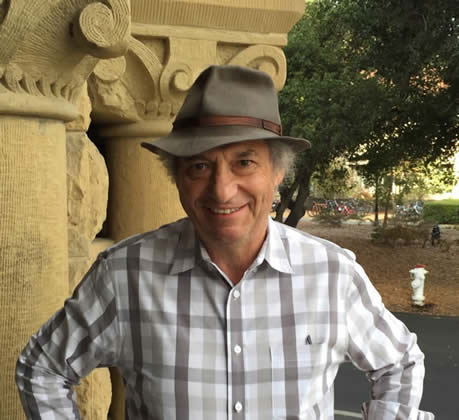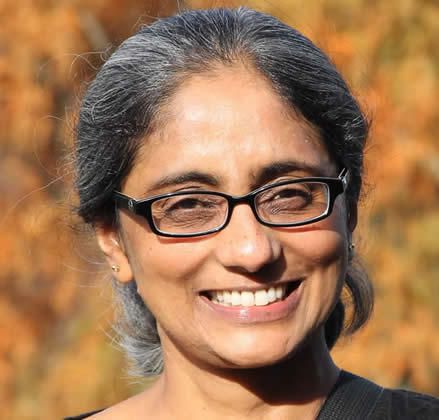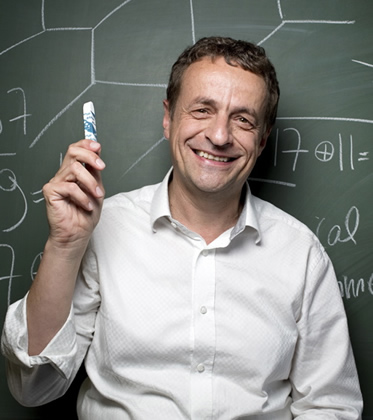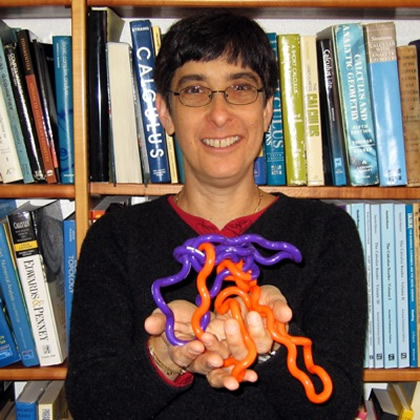Golden Section [sections.maa.org]
New this year! Mathematical Art exhibit.
If you create 2D or 3D art with mathematical content, please consider submitting a piece for the exhibit. Details click here.
Do you have a student who is ready to give a mathematical POSTER?
Invite them to give a presentation in the Contributed Poster Session! all details click here
Submission deadline: February 12.
Download call for posters
Winter 2016 Golden MAA Section Meeting at UC Davis: Information
Register
Online Registration coming soon!
Click here to register online[eventbrite.com] and pay with a credit card (DEADLINE: February 27 at 7:30am).
Click here to register by mail[goo.gl] and pay by check (DEADLINE: received by February 24).
On-site registration will be available for the meeting, but will be $5 more than the pre-registration charge.
Meeting location
University of California, Davis
Giedt Hall 1001, 1002, 1003
Saturday, February 27, 2016
Driving directions from interstate 80 and Map:
Take HWY 113 North.
Take the first exit, Hutchison drive, stay on your right to merge onto Hutchison.
Continue straight for three lights (you are entering the main campus)
After you cross La Rue road you will see soccer fields on your left.
At the third light, turn left to enter the parking structure
Here is a PDF file of the campus map with (A) parking, (B) conference location, (C) lunch venue, all marked in red.
Parking: Parking is free in the Pavilion Parking structure (see campus map). No permit is required on the weekend.
Program
Featuring the following exciting invited addresses by (see abstracts and bios below):
- Persi Diaconis, Stanford University
- Carries, Group Theory, and Additive Combinatorics
Erica Flapan, Pomona College- Intrinsic Properties of Graphs in Space
Janko Gravner, University of California, Davis- Randomness and Order in Random Order
Bernd Sturmfels, University of California, Berkeley- Eigenvectors of Tensors
Rekha Thomas, University of Washington- Graph Densities, Extremal Combinatorics and Optimization
The meeting will also feature
1) A contributed poster session (follow the link to the Call for Posters).
AND
2) A mathematical art exhibit running concurrently with the poster session.Â
Organized by Shirley Yap, CSU East Bay.
Schedule and Location (ALL talks are in Giedt Hall 1001, close to parking)
- 8:00-11:00 Registration
Giedt Hall - 8:00 -10:30 Refreshments
Giedt hall entrance - 8:30-4:00 MAA Book Sale
Giedt Hall entrance - 8:45-9:00 Welcome Ceremony
Giedt Hall 1001 - 9:00-9:50 Invited talk by Persi Diaconis
Giedt Hall 1001 - 9:50 -10:05pm Golden Section Business Meeting
Giedt hall 1001 - 10:10-11:05am Invited talk by Rekha Thomas
Giedt Hall 1001 - 11:10-12:00pm Invited talk by Janko Gravner
Giedt Hall 1001 - 12:00-1:00pm Lunch (at TERCERO dining, short walk from Giedt)
Lunch is buffet style - 1:00-2:30pm POSTER Session and Mathematical Art exhibit (refreshments in lobby)
In Giedt Hall 1002, 1003 adjacent rooms - 2:40-3:30pm Invited Address by Erica Flapan (P\'olya Lecturer)
Giedt Hall 1001 - 3:40 -3:55pm Teaching Award Presentation
Giedt hall entrance - 4:00-4:50 pm Invited Address by Bernd Sturmfels
Giedt Hall 1001 - End of event, Self-organized dinner with other participants
See information about dining options below
Hotels
For participants there are several options (distance to campus, from closer to farthest away)
- Best Western University Lodge (530) 756-7890
- Aggie Inn (530) 756-0352
- Best Western Plus Palm Court Hotel (530) 753-7100
- Econo Lodge (530) 756-1040
- University Park Inn and Suites (530) 756-0910
- La Quinta Inn & Suites Davis (530) 758-2600
- Holiday Inn Express & Suites Davis (530) 297-1500
Food & Dining
A light continental breakfast will be provided to all participants. We will also provide refreshments during the long break for posters/art exhibit.
If you must have a expresso in the morning, we recommend Mishka's Cafe (downtown 2nd st. and E), but there are other coffee shops in downtown, e.g., Peet's coffee (E st), Starbucks (F st), Delta Venus (B st). The excellent Davis farmer market (B and 3rd) has sweet breads and coffees too
The lunch organized by the conference is a buffet lunch at the residence hall dining hall (5 mins walk from the conference site). Lunch needs to be purchased in advanced (via registration!). The lunch is all-you-can-eat style buffet, with several food stations that include typical fair such as sandwiches, soups & salads, pizzas, burgers, as well as special gluten-free, vegetarian, or vegan choices. Free unlimited soft drink, coffee, tea, and dessert and fruit are included.
NOTE: It takes 10-15 mins to walk to other lunch options in downtown Davis.
We very much hope people will stay until the end of the event and have a chance to socialize with old and new friends and colleagues. Here below are some options for dinner that take large groups (last two are great choices but are outside downtown Davis). We suggest to call ahead and make a reservation if your group is large. The entire list of restaurants in Davis can be found at all Davis dining options. [davisdowntown.com]
- Sophia's Thai Kitchen (530) 758-4333
- Burgers and Brew (530) 750-3600
- Woodstock's Pizza Davis (530) 757-2525
- Steve's Pizza (530) 758-2800
- Sudwerk Brewery and Restaurant (530) 758-8700
- Symposium Restaurant & Pizza (530) 756-3850
Speaker's bios and abstracts of invited talks
|
Persi Diaconis Stanford University |
Persi Diaconis is the Mary V. Sunseri Professor of Statistics and Mathematics at Stanford University. He is particularly known for tackling mathematical problems involving randomness and randomization, such as coin flipping and shuffling playing cards. A member of the National Academy of Science and a Fellow of the American Mathematical Society, he has been the recipient of numerous awards, including the Rollo Davidson prize, Gibbs Lecturer, the Van Wijngaarden Award, the Levi L. Conant Prize. He has received honorary degrees from the University of Chicago and the University of St Andrews. |
Carries, Group Theory, and Additive Combinatorics
When we add numbers in the usual way, "carries" occur (for two digits chosen at random, the chance of a carry is 45%). We can do better, by a factor of two, by using signed digits but no choice of digits does any better. This last result is a theorem in additive combinatorics. The same kind of questions can be asked for any group (as I will explain, carries are co-cycles). With Shao and Soundararajan, we proved the following: let H be a normal subgroup of a finite group G. Let X be co-set representatives for H in G. Let C(X)=\#\{x,y in X with xy outside X}/|X|^2 (so C(X) is, at most, 1). We show that if C(X) is greater than 7/9, the extension splits (there is a choice of coset representatives with no carries).
|
Rekha Thomas University of Washington, Seattle
|
Rekha Thomas received a Ph.D. in Operations Research from Cornell University in 1994 under the supervision of Bernd Sturmfels. She then held post-doctoral positions atthe Cowles Foundation for Economics at Yale University (with Herb Scarf), and the Konrad-Zuse-Zentrum for Informationstechnik in Berlin. After spending a few years in the math department at Texas A&M University, she moved to Seattle, where she is now a full professor in the math department at the University of Washington. She is a fellow of the American Math Society and held the Robert R. and Elaine F. Phelps Professorship at the University of Washington from 2008-2012. Her main research interests are in optimization, computational algebra and its applications. |
Graph Densities, Extremal Combinatorics and Optimization
One of the corner stones of extremal combinatorics is the 1907 result of Mantel that a triangle free graph on n vertices cannot have more than half the maximum possible number of edges as n goes to infinity. The more detailed version of this question asks what the edge density will limit to given a specific triangle density. The full answer to this question eluded mathematicians for almost 100 years until it was settled by Razborov around 2007 using a framework called flag algebras. This tool has led to several other powerful results in extremal combinatorics. In this talk I will present a new take on this approach and its offshoots using symmetry exploiting methods in optimization. Along the way one encounters algebra, combinatorics, probability, representation theory, and optimization, making for a wild ride across several mathematical landscapes. Joint work with Annie Raymond and Mohit Singh.
|
Janko Gravner University of California, Davis |
Janko Gravner finished his BS in Applied Mathematics at University of Ljubljana, Slovenia, and then his Ph. D. in Mathematics at University of Wisconsin. After a posdoc at Cornell University, he came to UC Davis, where he has been since 1992. Janko is an expert probabilist who enjoys using computing in his work. E.g., his work on the modeling of snowflakes formation has attracted the attention of the media. He is also recognized as great teacher and expositor. |
Randomness and Order in Random Order
The talk will be an elaboration on the principle that a mixture of randomness and order makes life interesting. A common lie heard from mathematicians is a variation of: "The talk will be understandable by general audience." I will take that statement as a challenge, presenting ideas such as self-organization and metastability with no formal statements at all, in fact with no mathematical symbols.
|
Bernd Sturmfels University of California Berkeley
|
Bernd Sturmfels received doctoral degrees in 1987 from the University of Washington and the Technical University Darmstadt, Germany. After postdoctoral years in Minneapolis and Linz, Austria, he taught at Cornell University, before joining UC Berkeley in 1995, where he is Professor of Mathematics, Statistics and Computer Science. His honors include the Ford Prize, the Allendorfer Award, and the Hedrick Lectures, all from the MAA. A leading experimentalist among mathematicians, Sturmfels has authored ten books and 235 research articles, in the areas of combinatorics, algebraic geometry, and their applications. He has mentored 40 doctoral students and numerous postdocs. His current research connects algebra to statistics, optimization, and biology. |
Eigenvectors of Tensors
Eigenvectors of square matrices are central to linear algebra. Eigenvectors of tensors are a natural generalization. The spectral theory of tensors was pioneered by Lim and Qi a decade ago, and it has found numerous applications. We discuss the use of orthogonal tensor decompositions in data analysis, and we present work with Abo and Seigal aimed at characterizing which configurations of vectors arise as the eigenvectors of some tensor. This lecture also serves an invitation to applied algebraic geometry.
|
Erica Flapan Pomona College
|
Erica Flapan joined the faculty at Pomona College in 1986. Since 2006, she has been the Lingurn H. Burkhead Professor of Mathematics at Pomona College. In addition to teaching at Pomona College, Flapan has been teaching regularly at the Summer Mathematics Program for freshmen and sophomore Women at Carleton College. In 2011, Flapan won the Mathematical Association of America’s Haimo award for distinguished college or university teaching of mathematics. Then in 2012, she was selected as an inaugural fellow of the American Mathematical Society. She is currently a Pólya Lecturer for the MAA. Erica Flapan has published extensively in topology and its applications to chemistry and molecular biology. |
Intrinsic Properties of Graphs in Space
Knot theory is the study of embeddings of simple closed curves in three-dimensional space. A natural extension of knot theory is the study of embeddings of graphs. However, in contrast with knots, the structure of a graph can be complex, and this can affect all of its embeddings. If every embedding of a graph has a particular property, then we say that property is intrinsic to the graph. For example, a graph is said to be intrinsically knotted if every embedding of the graph in space contains a knot. In this talk, I will discuss intrinsic knotting and other intrinsic properties of graphs.
ALL students (undergraduate and graduate) are invited to submit short proposals for posters to be included the Contributed POSTER Session of the Meeting.
This session accepts contributions in all areas of mathematics, and all complete proposals will be considered.
There are many slots, but space is not unlimited, so please submit your poster early! It will help us plan for easels and boards needed.
Submissions should contain a title, an abstract (not to exceed 150 words, suitable for inclusion in the conference program), the name(s) of author(s) of the work (with an indication of who the presenter will be), and any special requests. Do include in each submission the institutional affiliations of all authors. Each poster will be provided an easel space and a board to display the work.
Abstracts should be submitted in LaTeX format, with an accompanying PDF file. If you do not use LaTeX, please submit a Text document together with a PDF file. Please email all submissions to Kristen Beck.
The submission deadline is 12 noon .
Student presenters receive complimentary registration and Saturday luncheon, plus a free one-year membership to the MAA or (to those who are already MAA members) a free book. We looking forward to your submissions!
For the first time in the history of the Golden Section, we will be hosting a mathematical art exhibition. If you know anyone who creates art with strong mathematical theme or content, please encourage them to submit their piece for consideration in the exhibit.
Guidelines
For consistency, we will adhere with many of the guidelines set by the Joint Mathematical Meetings art exhibit. Flat works will be limited in size to 28" x 28" (including frame), and 3-D works will be limited to 18" x 18" x 18". Exceptions will occasionally be made for existing artworks that exceed these dimensions. There is a limit of three artworks per artist. An exception is a group of closely-related small pieces that number no more than five pieces occupying a total footprint of no more than 15"x 15", which can be submitted as a single piece. An artist can appear on more than one submission in the case of collaborative work, but the total number of artworks for any given artist is limited to three regardless of whether some are collaborative or not.
Submission
Please email at most two photos (<= 10 MB each) of each piece you would like to submit, along with a brief description (< 100 words) of the piece, to Shirley Yap by February 12. Please put ART EXHIBIT in the subject title. A committee will review all submissions for mathematical content and craftsmanship and respond to artiests by February 19.
Event
The art exhibit will take place during an hour and a half between the morning and afternoon sessions. During these time, we encourage the artists to stand or sit by their pieces so as to encourage interaction between the viewers and the artist.
Artists are expected to register for and attend the conference. When you arrive at the conference in the morning, you may store your piece in a locked room until the art exhibition begins and retrieve it at the end of the event.
Artists are responsible for their pieces. The MAA Golden Section and UC Davis do not assume any responsibility and will only provide storage and display space for the artwork.



